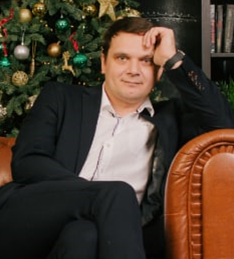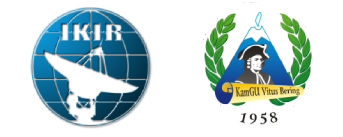Vestnik KRAUNC. Fiz.-Mat. Nauki. 2022. vol. 40. no. 3. pp. 72–87. ISSN 2079-6641
MATHEMATICAL MODELING
MSC 68U20
Research Article
Transport flow model based on interaction of particles with action potential
O. P. Bobrovskaya¹², T. V. Gavrilenko¹², V. A. Galkin¹²
¹Surgut Branch of SRISA 628426, Surgut, Energetikov st., 4, Russia
²Surgut State University, 628412, Surgut, Lenina st., 1, Russia
E-mail: o-bobrovskaya@mail.ru
The current booming development of driverless cars raises the question of assessing the impact of their penitration on the traffic flow, which makes the task of creating a mixed model relevant. The object of the research is the traffic flow. The goal is to create an adequate model based on the idea of action potential, in which cars are represented as particles attracting or repelling each other at a certain distance. Existing software products implementing various microscopic models of traffic flow are considered. There is described proposed mathematical model including two kinds of cars: driverless cars strictly obeying the rules and cars with real drivers who allow speeding and random changes of velocity. A program has been developed that implements the created model and allows changing its parameters. The macroscopic characteristics of the simulated flow have been compared with the available values of analogues and works of other researchers. The behavior of simulated cars when driving on a single-lane circular road, a two-lane circular road, and a single-lane figure-of-eight with crossing roads is considered. The results of model runs for mixed flow are presented.
Key words: traffic flow modelling, car-following models, micro-simulation software, action potential.
DOI: 10.26117/2079-6641-2022-40-3-72-87
Original article submitted: 01.10.2022
Revision submitted: 15.11.2022
For citation. Bobrovskaya O. P., Gavrilenko T.V., Galkin V. A. Transport flow model based on interaction of particles with action potential. Vestnik KRAUNC. Fiz.-mat. nauki. 2022, 40: 3, 72-87. DOI: 10.26117/2079-6641-2022-40-3-72-87
Competing interests. The authors declare that there are no conflicts of interest regarding authorship and publication.
Contribution and Responsibility. All authors contributed to this article. Authors are solely responsible for providing the final version of the article in print. The final version of the manuscript was approved by all authors.
Funding. The publication was made within the framework of the state task of the Federal State Institution FNTs NIISI RAS (Performance of fundamental scientific research GP 47) on topic No. 0580-2021-0007 «Development of methods for mathematical modeling of distributed systems and corresponding calculation methods».
The content is published under the terms of the Creative Commons Attribution 4.0 International License (https://creativecommons.org/licenses/by/4.0/deed.ru)
© Bobrovskaya O.P., Gavrilenko T. V., Galkin V. A., 2022
References
- Hoogendoorn S., Bovy P. H. L. State-of-the-art of vehicular traffic flow modeling, J. Syst. Cont. Eng., 2001, 215: 4, 283–303, DOI: 10.1243/0959651011541120
- Vlasov A. A. Teoriya transportnyh potokov [Vehicular flow theory]. Penza, PGUAS, 2014, 124 (In Russian).
- Mohmmadsina S. Microscopic Simulation Analysis of Connected and Autonomous Cars and Trucks at a Freeway Merge Area, Electronic Theses and Dissertations, 2021,https://scholar.uwindsor.ca/etd/8613.
- Zatmeh-Kanj S., Toledo T. Car Following and Microscopic Traffic Simulation Under Distracted Driving, Transp. Res. Rec., 2021, 2675:8, 643–656.DOI: 10.1177/03611981211000357.
- Olstam J. J., Tapani A. Comparison of Car-following models, VTI meddelande 960A, 2004, pp. 36, 36+2Appendices pp., https://www.divaportal. org/smash/get/diva2:673977/FULLTEXT01.pdf
- Van Aerde M. et al. INTEGRATION: An Overview of Traffic Simulation Features, Published as a conference paper at
Transportation Research Board Annual Meeting Washington, D.C., 1996,https://citeseerx.ist.psu.edu/viewdoc/summary?doi=10.1.1.116.4552. - SUMO. Definition of Vehicles, Vehicle Types, and Routes [Electronic resource].URL: SUMO. Definition of Vehicles, Vehicle Types, and Routes (date of the application: 06.07.22).
- Lopez P.A. et al. Microscopic Traffic Simulation using SUMO, 2018 IEEE ITSC, 2018, IEEE, 2575–2582,DOI: 10.1109/ITSC.2018.8569938.
- Treiber M. traffic-simulation.de [Electronic resource].URL: https://trafficsimulation. de/ring.html (date of the application: 06.07.22).
- Shvetsov V. I. Mathematical Modeling of Traffic Flows, Autom. Remote Control, 2003, vol. 64, no. 11, pp. 1651–1689, DOI: 10.1023/A:1027348026919
- Sugiyama Y. et al. Traffic jams without bottlenecks—experimental evidence for the physical mechanism of the formation of a jam, New J. Phys., 2008, vol. 10, no. 3, pp. 033001,DOI: 10.1088/1367-2630/10/3/033001.
- Lu Q., et al. The impact of autonomous vehicles on urban traffic network capacity: an experimental analysis by microscopic traffic simulation, Transportation Letters, 2020, 12:8, 540–549, DOI: 10.1080/19427867.2019.1662561

Bobrovskaya Olga Pavlovna – Postgraduate Student of the SRISA; Surgut State University; Engineer of the Department of Biophysics and Neurocybernetics, Branch of SRISA, Surgut, Russia, ORCID 0000-0001-7045-9085.

Gavrilenko Taras Vladimirovich – PhD (Tech.), docent, Surgut State University; Deputy Director, Branch of SRISA, Surgut, Russia, ORCID 0000-0002-3243-2751.

Galkin Valery Alekseevich – Doctor of Physical and Mathematical Sciences, Professor, Surgut State University; Director, Branch of SRISA, Surgut, Russia, ORCID 0000-0002-9721-4026.

